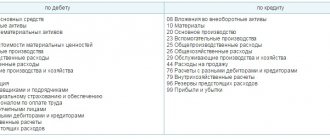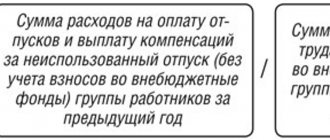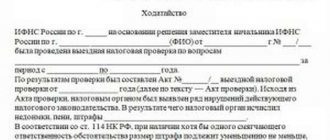Purpose of UPD
A universal transfer document is an invoice combined with a primary document. On its basis, VAT can be deducted. The UPD meets all legal requirements for primary documentation, so the buyer has the right to recognize expenses on its basis.
In addition to the invoice, the UPD can replace a number of transfer documents:
- waybill TORG-12;
- certificate of completed work (services);
- act of acceptance and transfer of OS;
- invoice for the release of materials to the third party.
All organizations and individual entrepreneurs (even those that do not pay VAT) can use the universal form. UTD numbering is carried out in a single chronology with invoices.
When can it be used?
The use of UTD is possible at any time during the turnover of goods or services between sellers and buyers, if such turnover is under the jurisdiction of the tax authorities of the Russian Federation.
UTD can be used by both legal entities under the general taxation regime and individual entrepreneurs and legal entities under the simplified taxation regime.
Since the use of a universal transfer document is possible in place of other financial and payment documents, participants in tax relations can start using such a document at any time, as soon as they have the technical ability to fill it out correctly, depending on who their counterparty is.
When does the UPD replace the invoice?
You can replace the UTD invoice in the following cases:
- when shipping goods (including for export);
- when transferring property rights;
- when transferring the results of work performed or services provided (when drawing up a universal transfer document for services, it is recommended to attach a detailed report on them).
Sometimes situations arise when UTD and invoices are mixed together under one contract. There is no need to worry about this, since this will not affect the accounting of VAT and expenses. But in order to avoid chaos in the document flow, it is necessary to consolidate this method of registering shipments in the VAT accounting policy and in contracts with counterparties. Then representatives of the Federal Tax Service will have no reason to make claims regarding why different primary documents were drawn up within the same agreement.
Why was the universal transfer document developed?
The need for a single document that would reduce time and costs for information processing arose a long time ago. But from a legal point of view, its development and application became possible only in 2013, when the Federal Law of December 6, 2011 No. 402-FZ “On Accounting” abolished the mandatory use of unified forms of primary documents.
Following the abolition of unified forms, the Federal Tax Service introduced a new form of a single document - the Universal Transfer Document. The basis for its development was the established form of the invoice, to which details were added that are mandatory for other most commonly used forms of primary documents: consignment note TORG-12, invoice for the release of materials to the party No. M-15, acts of acceptance and transfer of objects fixed assets (except for buildings and structures) No. OS-1 and No. OS-1b, TTN. At the same time, repetitive information was completely excluded.
The UPD complies with all established rules for primary accounting documents; accordingly, the buyer has the right to recognize expenses on its basis, and this form of document can also be the basis for deducting VAT.
What is better – invoice or UTD?
Using universal transfer documents in an organization has a number of advantages:
- simplification of document flow;
- reduction of the archive of accounting papers;
- preparation of documents in a uniform style;
- reduction of errors in document preparation;
- saving time on preparing documents, reducing paper costs.
The UPD is very convenient to use, since when registering various transactions it is filled out according to a single template. Responsible persons will not have to think about how to fill out the invoice in the TORG-12 or M-15 form. A sample of filling out the UPD for services can be taken as a basis.
It can be concluded that the use of UTD is more profitable compared to the use of conventional invoices. The need for UPD has been brewing for a long time, and it is the future. But sometimes situations still arise when it is impossible to do without issuing invoices.
What is UPD?
A universal
transfer document
(UDD) is a form that simultaneously performs the functions of a primary accounting document and an invoice.
The Federal Tax Service has fixed the recommended form of the UPD. We repeat, the developed form is only recommended. This means that organizations have the right to modernize the UPD for their own convenience by adding the necessary indicators without violating the integrity of the document. The main thing is to fix the form in the accounting policy of the organization, and in the document itself - to indicate all the mandatory details for the primary documentation, in particular, the name of the form, the date of execution of the document, and the indication of the originator; content and transaction meter; indication of the persons responsible for processing the transaction (full name, position, signature).
The recommended UPD Form is one of the possible forms of a document on the transfer of goods (work, services) and property rights. The provisions of the letter of the Federal Tax Service of Russia dated October 21, 2013 N ММВ-20-3/ [email protected] determine that filling out all UTD details as mandatory for primary documents and details for invoices allows you to use it simultaneously for the purpose of calculating income tax and calculations for value added tax.
At the same time, the letter of the Federal Tax Service of Russia dated October 21, 2013 N ММВ-20-3/ [email protected] is not a normative legal act, does not amend or supplement federal legislation and does not contain an exhaustive list of indicators that can (should) be recorded by the parties when registering transactions transfer of goods (work, services), property rights, and does not limit the rights of business entities to use other forms of primary accounting documents and invoice forms.
Required details
The mandatory details of the UPD coincide with the details of the primary documents listed in clauses 5-6 of Art. 169 of the Tax Code of the Russian Federation and Part 2 of Art. 9 of Law No. 402-FZ. Along with the invoice details, the mandatory UTD details are:
- Title of the document;
- Date of preparation;
- name of the legal or natural person;
- content of the fact of economic activity;
- the value of natural or monetary measurement;
- position of the responsible person who completed the transaction;
- Full name and signatures of responsible persons.
Entrepreneurs have the right to add additional details to the UTD in the same way as to the invoice. Previously, Federal Tax Service specialists stated that additional details should be provided outside the frame that separates the invoice from the “primary” one, but now the tax service does not prohibit adding information inside it (based on Federal Tax Service letter No. SD-4 dated August 17, 2016 -3/15094).
Those responsible for document preparation may have a question: is it necessary to fill out the product code in the UPD? This column is filled in if the organization or individual entrepreneur shipped goods to the EAEU member countries. If the required information is missing, a dash is placed in the column.
How to fill in the code of goods, works, services in the UPD? The product code is indicated in accordance with the foreign economic Unified Commodity Nomenclature of the EAEU (TNVED).
What is UPD and why is it needed?
Based on this document, accounting is maintained, expenses for calculated tax on income received are written off, and a VAT tax benefit is claimed.
Such a combination of basic functions is quite natural and quite logical, because the correct execution of primary accounting papers is necessary for timely financial accounting at the enterprise.
What is an offer? Why does it need to be compiled? You will learn about all the intricacies of creating this document in the article at the link.
Let us consider, as an example, some provisions of the Tax Code for providing tax benefits:
- An invoice is the basis on which the buyer accepts certain goods and property rights from the main seller. Based on this document, accrued taxes are subject to refund (deduction).
- Taxes billed to the taxpayer upon purchase of goods, property rights within the Russian Federation or paid upon the import of a certain type of goods into the territory of the country and other territories located within the jurisdiction are subject to refund, after registration of these goods, property rights, taking into account the features of this article .
But only subject to the availability of primary securities (Tax Code of the Russian Federation, Article 127, paragraph 1).
But primary securities play the following role when determining the tax on profits received:
- Incurred expenses are expenses that have documentary evidence drawn up in accordance with the requirements of the legislation of the Russian Federation or papers drawn up in accordance with business norms used in another state within which these expenses took place, and (or) documents in some way confirming the fact of these expenses ( Tax Code of the Russian Federation, Article 252).
- Tax benefit - systematization of information for calculating the tax base for contributions to the state budget based on information contained in primary documents (Tax Code of the Russian Federation, Art. 313).
An example of a completed universal transfer document.
When can a universal document be used, instead of which forms?
The document can be used together with primary standard papers and, accordingly, with invoices. You can use such paper when completing the following types of transactions:
- when providing the results of the activities performed;
- when unloading delivered products;
- when transferring existing rights to certain property;
- as a result of providing various services.
In everyday document flow, it is not necessary to use a new form of document, since entrepreneurs and large companies have the right to use other papers that meet the requirements of the Federal Law (Article 9 No. 402).
UPD is an invoice containing not only basic details, but also other data:
- waybill;
- goods transport act;
- invoice for the release of goods to the third party;
- document on acceptance and transfer of OS objects.
You will learn detailed information on how to issue an invoice for payment from an individual entrepreneur from this material.
In this connection, when selling products using such paper, the enterprise has the right to combine in it information reflected in forms TORG-12, M-15, OS-1, 1-T.
Is it possible to use a UPD form instead of a consignment note?
The presentation by the seller of a universal transfer act instead of an invoice cannot serve as a refusal to provide a VAT deduction.
The document contains all the main data of the invoice , that is, in fact, it is a duplicate of it, but at the same time it contains additional details of the remaining primary documents.
In what cases a notice of termination of a contract may be necessary, you will find out by reading the article at the link.
In turn, the Tax Code of the Russian Federation does not prohibit entering other data into the invoice, and, therefore, UTD can be used as a basis for providing a VAT deduction.
Sample of filling out UPD.
UPD status
When filling out the form in the upper left part, you must select one of two statuses. It is the status of the document that determines the list of mandatory details that must be indicated in it.
A universal transfer document with status “1” must contain all the details of the primary document and invoice. In this case, the UPD will perform the function of two documents simultaneously. This status is indicated if the document reflects the fact of economic activity, both for accounting purposes and for the imposition of VAT and income tax.
UPD with status “2” acts only as a primary document and contains indicators of the delivery note (act). It does not perform the function of an invoice, so it must be issued separately. In the form with status “2”, fill out only those details that should be contained in the deed of transfer that it replaces. Some fields can be left blank.
Displaying information about UPD in the Reconciliation Report
In the document Reconciliation report of settlements with the counterparty (Sales - Reconciliation statements or Purchases - Reconciliation statements) you can display the full details of the set of issued and received documents.
To do this, on the Advanced , check the following boxes:
- Display the full names of documents - the reconciliation report reflects: the full name of the program document that formalized the operation;
- details of the primary document (indicating the issuance/receipt of UTD).
In the printed form of the act, the names of the documents are displayed similarly.
To access the section, log in to the site.
See also:
- Updated invoice and UPD formats - from February 2019
- Who must sign on lines 13 and 18 in the UPD?
- How to make a reconciliation report with a counterparty in 1C 8.3: step-by-step instructions
- [01/14/2021 and 01/18/2021 entry] VAT return for the 4th quarter of 2020 in 1C
Did the article help?
Get another secret bonus and full access to the BukhExpert8 help system for 14 days free of charge
Related publications
- Is it necessary to install a UTD switch in 1C if a UTD with status 2 is received? You do not have access to view. To gain access: Complete...
- Do the settings in 1C: Trade Management affect the UPD switch in 1C: Accounting? You do not have access to view. To gain access: Complete...
- Is it possible to indicate in 1C the condition which document the supplier uses (UPD, Act, TORG-12), so that when registering the Receipt, the accountant can see this? We are the largest taxpayers, we have a lot of expense agreements...
- Is it possible to use the simplified tax system to implement UPD? You do not have access to view. To gain access: Complete...











